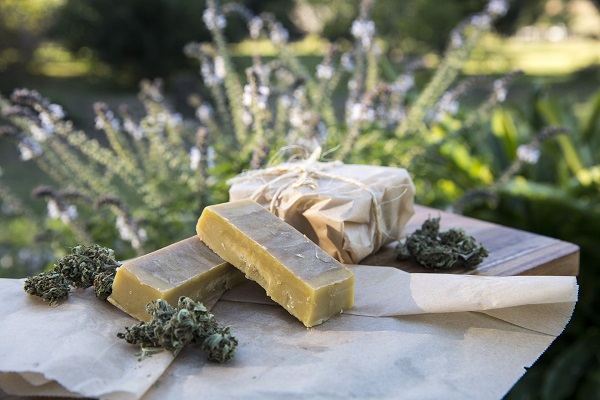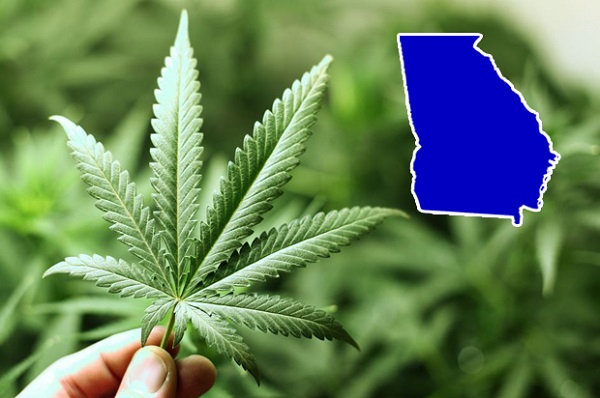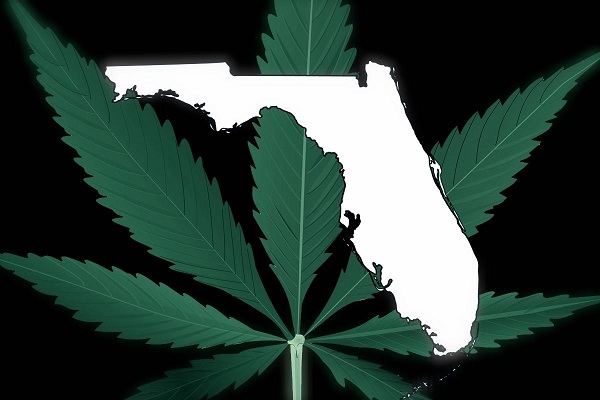Cannabutter is a popular ingredient used in many cannabis-infused recipes, such as brownies, cookies, and other edibles. It is a simple and versatile way to add cannabis to your favorite foods, allowing you to enjoy the benefits of this herb in a discreet and delicious way. In this article, we will guide you through the process of making cannabutter at home. With a few basic ingredients and some patience, you can create your own potent and flavorful cannabutter to use in all your favorite cannabis-infused dishes. So, let’s get started!
Cannabutter basics
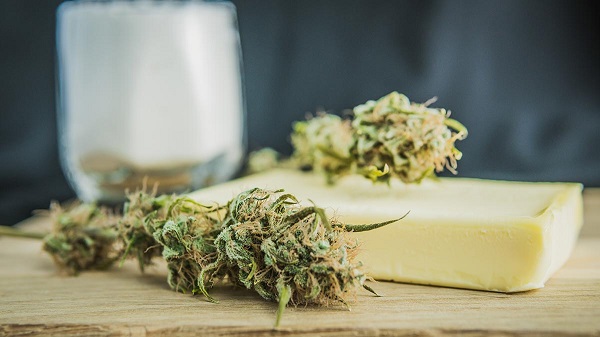
Cannabutter is a key ingredient in many cannabis-infused recipes, and is essentially butter that has been infused with the psychoactive compound THC (tetrahydrocannabinol) found in marijuana. This process allows the THC to be more easily absorbed into the body, making it an effective and popular way to enjoy the benefits of cannabis.
To make cannabutter, you will need a few basic ingredients, including butter and cannabis flower or trim. The quality and strength of the cannabis used will affect the potency of the final product, so it is important to choose a strain that meets your desired effects.
Use good quality butter. A higher quality product will give a better end result. Almost any butter or oil that contains fat is a good substitute. Avoid margarine or low fat butter. The beneficial compounds in cannabis, known as cannabinoids, must bind to fat in order to be digestible. Without this binding, THC, CBD and other cannabinoids will have no effect.
Step 1: Decarb the cannabis
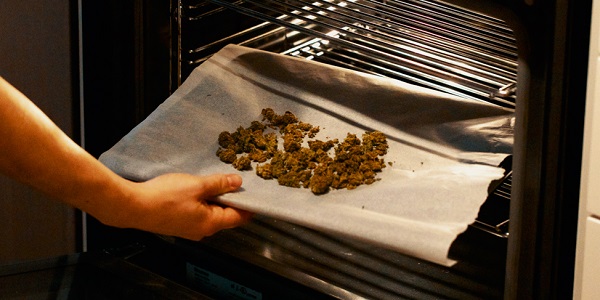
Decarboxylation, or “decarbing” for short, is the process of heating cannabis to activate its psychoactive compounds, particularly THC. This is an essential step when making cannabutter, as it allows the THC to be more easily absorbed into the body and provides the desired effects.
- Grind the cannabis flower. Use a coffee grinder specifically designed for cannabis. As a result, you will get coarse ground herb.
- Preheat oven to 230-245 degrees Fahrenheit. The ideal temperature depends on your oven, its age, and how evenly it cooks.
- Spread the ground cannabis on a non-stick baking sheet. A non-stick baking sheet that has not been previously used for cooking is preferred. If you only have a pan that has been used for eating, lay down a sheet of parchment paper to protect the hemp from any leftovers in the pan. It also helps prevent sticking.
- Bake for 30 minutes. Stir it every five minutes to make sure it’s evenly decarburized.
- Don’t overdo it. Set an alarm and do not exceed 40 minutes. Too much heat can destroy cannabinoids and terpenes, compounds in essential oils that work in harmony with cannabinoids to enhance the effects of cannabis. The goal is to activate beneficial compounds without overcooking or damaging them.
Step 2: Steep on the stovetop
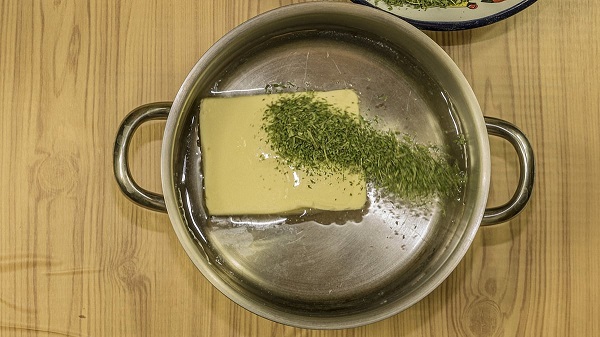
Now you are ready to put the butter on the stove and start steeping.
- Melt 1 cup butter and 1 cup water. The water will help the butter heat up more evenly. Water that does not evaporate will be removed at the end. For a half serving, use 1/2 cup water, 1/2 cup butter, and 1/8 ounce cannabis.
- Set the burner to the lowest temperature. Butter should be cooked at 150 degrees Fahrenheit, up to a maximum of 200 degrees. A kitchen thermometer will help you determine the exact temperature.
- Add decarbed marijuana and mix. Cover the pot with a lid. This helps distribute heat, which is ideal for low and slow extractions.
- Let simmer at 150 degrees for at least three hours. If you want a stronger butter for longer, you can steep for four hours, but make sure the temperature is as low as possible. You can also add more water if you choose a longer cooking time, as it evaporates and leaves the butter vulnerable to overheating. Stir occasionally so that it doesn’t burn.
Alternative methods: Double boiler or crockpot
Both of these methods aim to balance and stabilize the temperature of the butter so that it doesn’t get too hot and burn in the process.
For the double boiler method: Simmer 1 cup of water in a large saucepan. Add 1 cup of butter and hemp to a glass or metal bowl on top of the pot. Simmer for three hours. Keep an eye on the water level in the lower pot and top up as needed.
For the crockpot method: Add the cannabis, water, and butter together to a saucepan. Set the multicooker temperature to 150 degrees Fahrenheit for three hours.
Step 3: Strain your butter
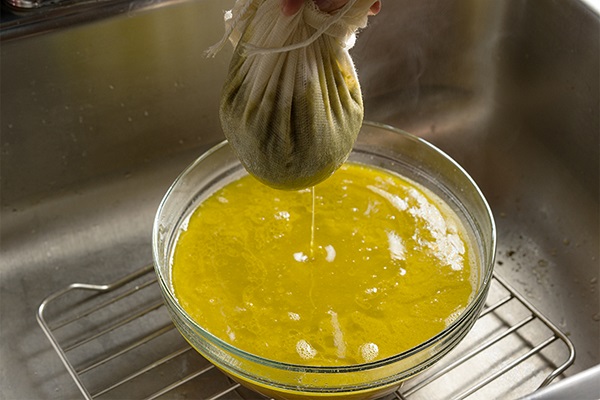
To strain your cannabutter, you’ll need a few items:
- Cheesecloth
- A bowl or container to catch the liquid
Here’s how to strain your cannabutter:
- Place the cheesecloth over the bowl or container. The average metal food strainer will be too coarse for this step.
- Slowly pour the butter mixture over the cheesecloth, allowing the liquid to filter through into the bowl.
- Discard the leftover plant material or save it for another use.
- Let it cool. 30 minutes at room temperature will start the process, then transfer it to the fridge.
- Remove excess water. Once it’s cool and solidified, you will be able to clearly see the butter on the top and a small layer of water on the bottom. Carefully pour the water out of the jar.
Don’t press or squeeze the weed and butter mixture down as it strains. Pressing the weed releases bitter tannins and chlorophyll that can alter the flavor of the cannabutter.
Step 4: Enjoy tasty weed butter!
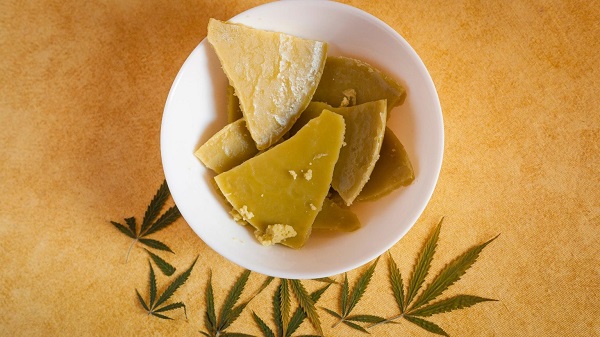
Your cannabutter is ready to use. You can cut it into small uniform pieces for easy dosing. Cannabutter can be used in place of butter or oil in almost any recipe.
Since it is very potent, replace it with just a small amount of cannabis oil until you know your tolerance level. You can combine cannabutter with regular butter when dosing for recipes. And you can always add more cannabutter, but you can never undo it.
How to dose cannabutter
Dosing cannabutter can be tricky, as the potency of your final product depends on a few factors, such as the strength of the cannabis you used and the amount of time it was cooked for. However, here’s a general formula you can use to estimate the potency of your cannabutter:
- Determine the potency of your cannabis: The first step is to determine the potency of the cannabis you used in your recipe. If you don’t know the potency, you can make a rough estimate based on the strain and how much you used.
- Calculate the total THC content: Multiply the total amount of cannabis used in your recipe (in grams) by the percentage of THC in your cannabis. For example, if you used 7 grams of cannabis with a THC content of 20%, your total THC content would be 1400 milligrams (7 x 0.20 x 1000).
- Calculate the THC per serving: Divide the total THC content by the number of servings in your recipe. For example, if you made a batch of 28 cookies, each containing an equal amount of cannabutter, your THC per serving would be 50 milligrams (1400 / 28).
It’s important to start with a low dose and wait at least 2 hours before consuming more, as the effects of edibles can take some time to kick in and can be much stronger and longer-lasting than smoking or vaping. It’s also a good idea to keep track of how much you consume and the effects you experience to help you determine the appropriate dose for you.
How to store cannabutter
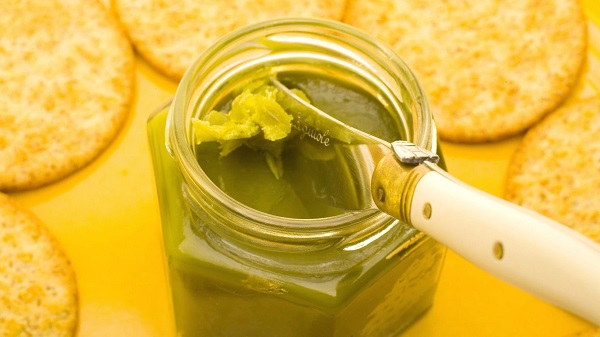
Store your cannabutter in the fridge in an air-tight glass jar.
The cannabutter stored in the fridge should last 3 to 4 weeks. You can also store it in an opaque or dark glass jar. Light exposure degrades cannabis over time, so any opaque jar or covering will extend its life.
You can also freeze cannabutter if you really want it to last. Freezing cannabis does not degrade its effects, and can extend the life of the cannabutter up to six months.
Always smell older cannabutter. If it smells rancid, don’t eat it!
Conclusion
Cannabutter is a versatile and popular cannabis-infused ingredient that can be used in a variety of recipes. While making cannabutter can be time-consuming and requires some patience and attention to detail, the end result is a potent and flavorful ingredient that can be used in baked goods, sauces, and more.
When using cannabutter in recipes, it’s important to start with a low dose and wait at least 2 hours before consuming more, as the effects of edibles can be stronger and longer-lasting than other forms of cannabis consumption.
Overall, cannabutter can be a fun and creative way to incorporate cannabis into your cooking and baking, but it’s important to use it responsibly and in moderation.

